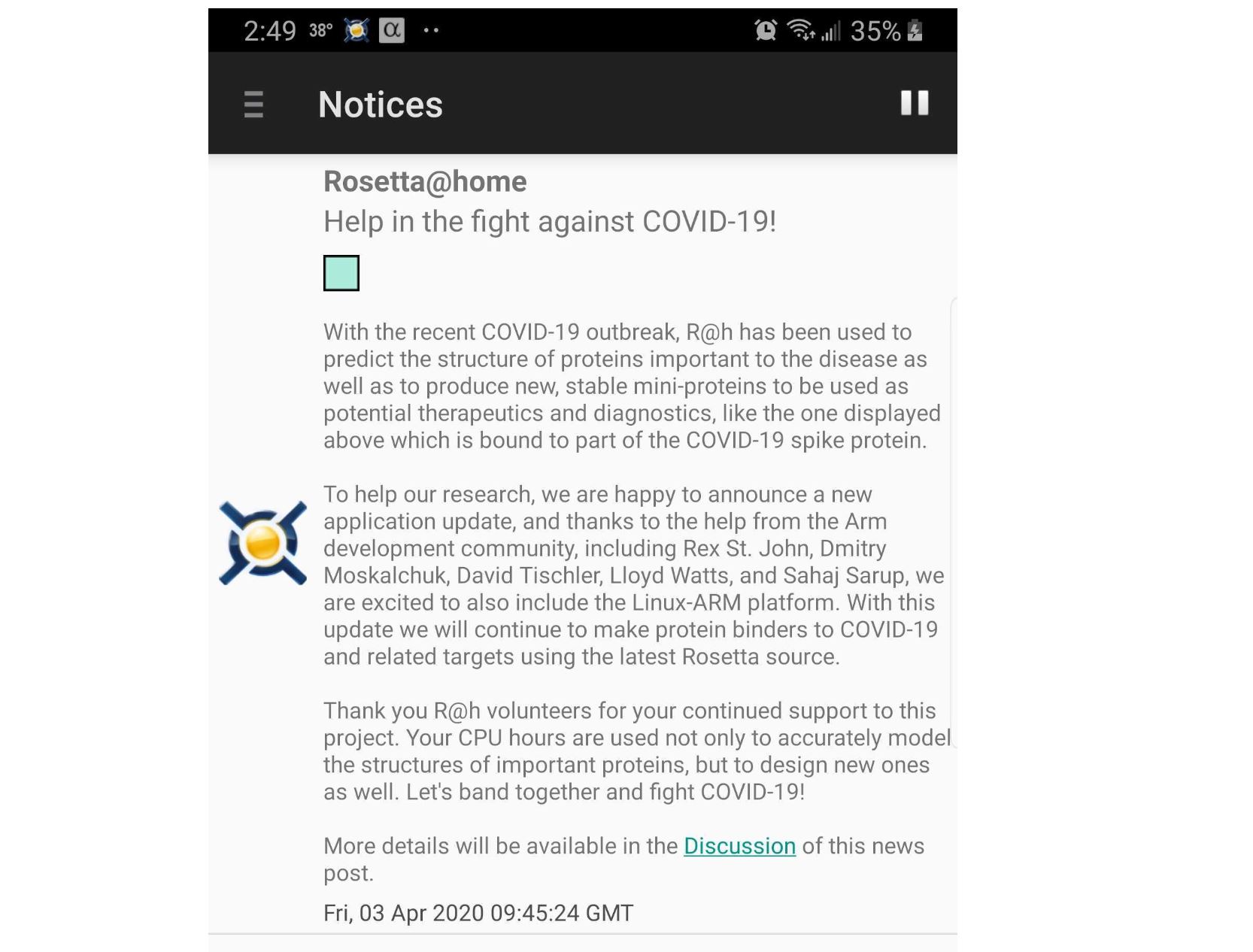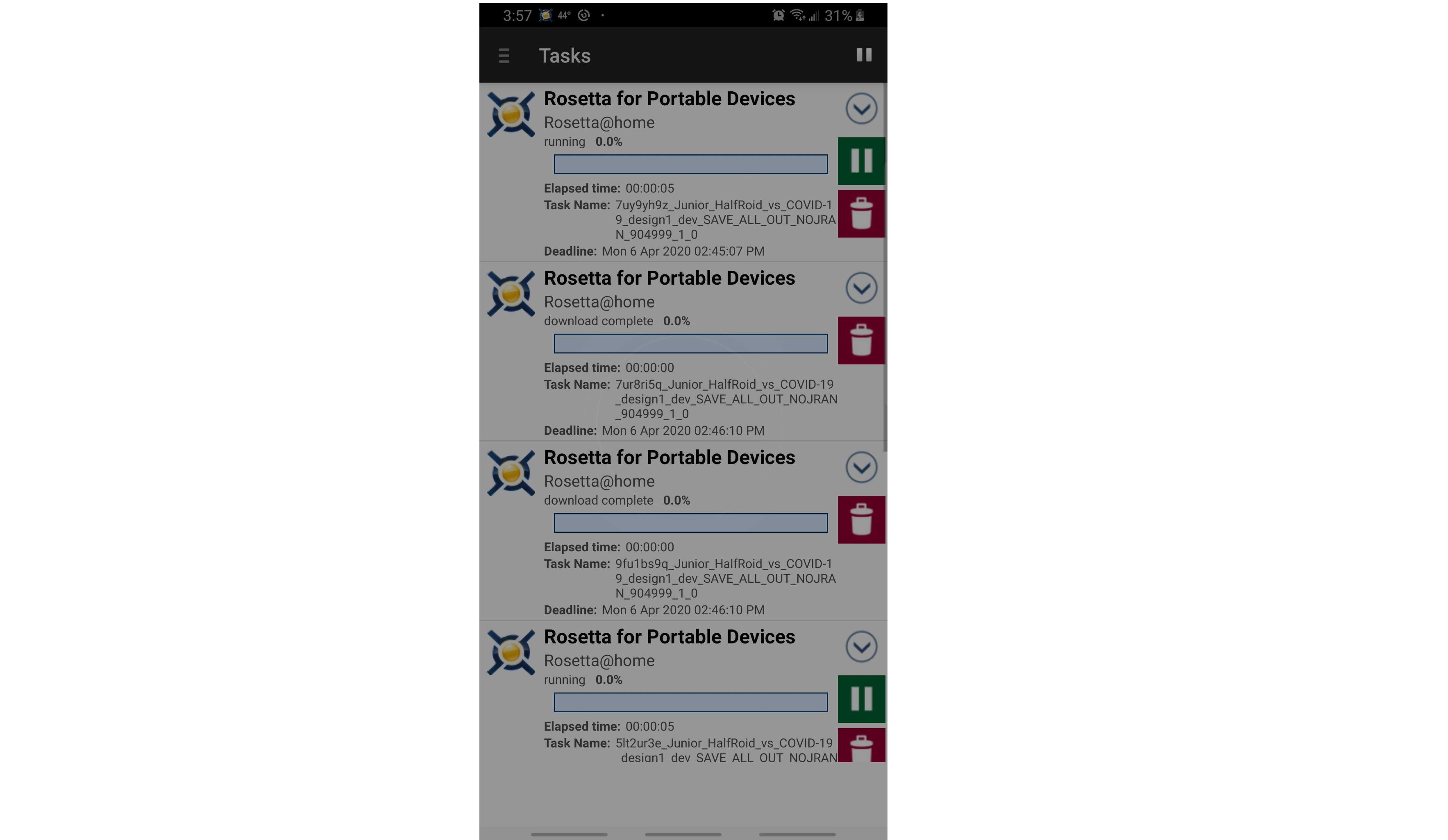Join The Fight Against the Coronavirus on Your Smartphone or Raspberry Pi
Taking the COVID-19 fight to Raspberry Pi and smartphones
Imagine if the compute power of all the world's estimated 3.5 billion smartphones were simultaneously crunching away to search for a cure for the coronavirus. Today, that's at least theoretically possible with the announcement that COVID-fighting research can now run on Arm64 devices, meaning you can help researchers find a cure or vaccine for the coronavirus on both Raspberry Pi devices and an app on your smartphone.
The Rosetta@Home project works much like the now-famous Folding@Home project that has reached superstar status. The program allows researchers to define massive problems used to research treatments and cures for diseases -- COVID-19 in this case -- that typically require supercomputer-class levels of power to solve. The distributed computing program takes those large problems and breaks them down into smaller chunks that are crunched by volunteers on their computers, and to astonishing affect; the Folding@Home project recently passed 1.5 ExaFLOPS of performance, which is the equivalent of the raw power of the top 103 supercomputers in the world, combined.
Unfortunately, Folding@Home is limited to x86 computers, meaning it only runs on desktop PCs and standard servers, and not on Linux/ARM-powered devices like Raspberry Pi or smartphones. However, the BOINC project hosts workloads for several different computing projects, and it now has both a 64-bit ARM-compatible program for Raspberry Pi devices and an app that you can run on your smartphone to fight the coronavirus. These workloads come courtesy of the Rosetta@Home project.
Here's a video tutorial on how to get the BOINC client up and running on Raspberry Pi, but we're working on a more concise set of instructions. As you can see below, BOINC also updated its smartphone app today (Android only), and we were able to get the program up and running with a minimum of fuss.


We did notice that the program slowed down our phone's performance considerably, but you can adjust how much system resources the program consumes, like the number of cores it uses, and to only operate when the phone is connected to a charger and/or a Wi-Fi connection. That reduces the impact of the program on performance, all while still fighting the coronavirus effortlessly in the background.
Raspberry Pi boards and smartphones may not come with the horsepower of the CPUs and GPUs found in desktop PCs, but they are incredibly power efficient and very numerous. In big numbers, even smaller contributions will help researchers as they race to find a cure for the coronavirus.
We're not sure if the Rosetta@Home network can reach the massive power we've seen with the Folding@Home resurgence. But given that Raspberry Pis power some of the world's supercomputers, and there are roughly 3.5 billion smartphones in use around the planet, the cure for the coronavirus could come from a small workload running on a Pi or someone's unassuming smartphone.
Get Tom's Hardware's best news and in-depth reviews, straight to your inbox.

Paul Alcorn is the Editor-in-Chief for Tom's Hardware US. He also writes news and reviews on CPUs, storage, and enterprise hardware.